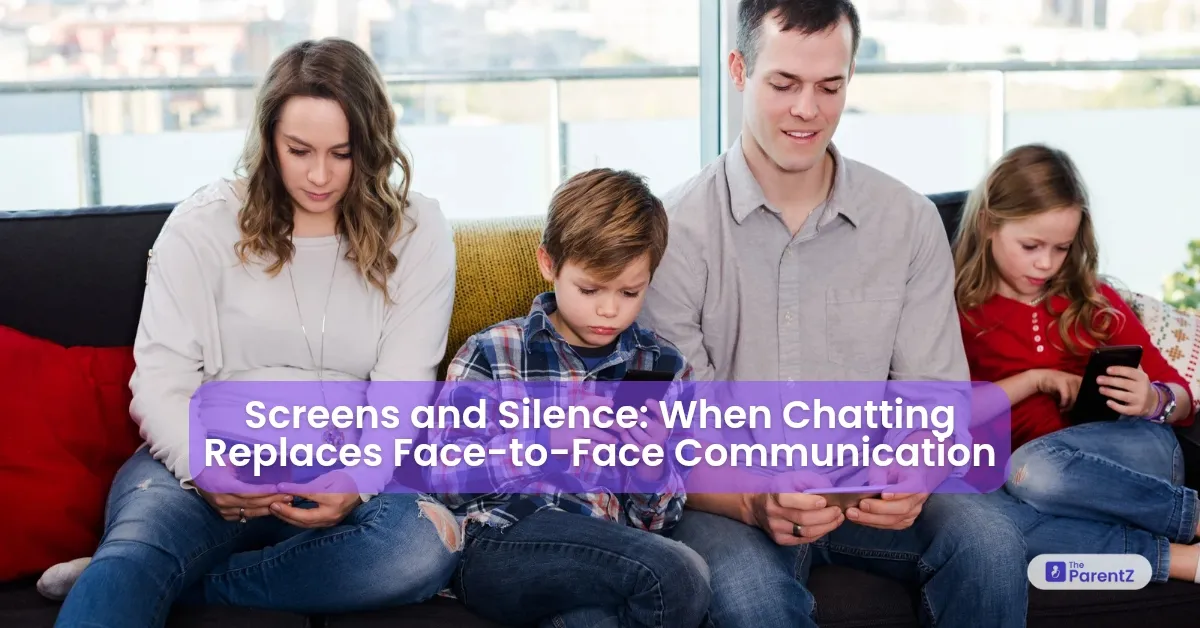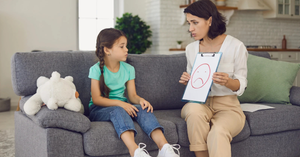Picture this: A teenager sits on the couch, laughing at their phone, taking selfies, and typing furiously for hours. When asked if they're enjoying talking to friends, they respond with surprise: "Of course! We're all hanging out right now."
But nobody else is in the room.
This scene plays out in countless homes today, illustrating how the definition of "being together" has changed for many young people. Phones have become portals to social lives, with chat apps and social media creating a constant stream of connection that never requires being in the same physical space.
This shift raises interesting questions about how communication is evolving. There's no right or wrong way to connect – texting friends or meeting up at the mall – both have their place. What's worth exploring is why this shift is happening and what it means for kids growing up in this new reality of digital connections.
Let's examine why many young people often choose screens over face-to-face time and what might be gained and lost along the way.
The Digital Drift
Consider a typical day for many teens. School ends, and the first thing most do? Check their phones. There's always someone to reply to, a story to view, or a post to like. Before long, hours have passed, and dozens of conversations have taken place without a single word spoken aloud.
It's not that kids don't want to hang out in person. The reality is just more complicated.
Why Kids are Chatting More and Meeting Less?
The Convenience Factor
Let's be honest – texting is super convenient. You can message your friend while:
- Lying in bed (no need to get dressed!)
- Watching Netflix
- Eating dinner
- Doing homework
- Even while in the bathroom (many kids do it)
You can chat with multiple people at once without anyone feeling left out. Try having three in-person conversations simultaneously and see how that goes!
The Distance Dilemma
Many of our kids have friends who don't live nearby. Maybe their best friend moved away, or they met someone cool online who lives in another state. With chat, distance doesn't matter as much.
Even for friends who live closer, coordinating schedules can be tough. Between school, activities, family obligations, and part-time jobs, finding time when everyone is free AND has transportation can feel impossible.
The Energy Equation
After a long day at school, sometimes, the thought of going out again feels exhausting. Chatting lets them connect without using up what little energy they have left.
Being "on" in person requires effort – you have to think about how you look, react in real-time, and maintain the right facial expressions. Messaging gives kids time to think, edit, and present their best selves. When you're feeling anxious or drained, that's a huge relief.
The Safety Net of Screens
Let's talk about something real – talking in person can be scary sometimes. When you're messaging, you can:
- Take time to craft the perfect response
- Use emojis instead of figuring out your facial expression
- Avoid immediate judgment
- Exit awkward conversations more easily
- Share difficult feelings without seeing immediate reactions
For many kids, especially those feeling insecure or dealing with social anxiety, screens provide a buffer that feels safe and protective.
What's Gained and What's Missed
The Digital Upside
Chatting gives us some real benefits:
- We can maintain more relationships than ever before
- We can express ourselves in new ways (memes, anyone?)
- We can find communities of people with shared interests
- We can stay connected during busy periods
- We can build confidence in our communication
The In-Person Magic
But there's stuff our kids miss when they only chat online:
- The warmth of laughing together (real laughs, not just typing "lol")
- The comfort of a hug when you're having a rough day
- The excitement of spontaneous adventures
- The deeper connections that come from sharing physical space
- The full experience of emotions that includes tone, facial expressions, and body language
For Kids: Finding Balance
Here's the thing – neither way of connecting is "better" or "worse." They're just different. Your generation is navigating a world where you have more communication options than any generation before you. That's both amazing and challenging.
You're not wrong for preferring to chat sometimes. Your parents aren't wrong for wanting you to hang out in person more. We're all just trying to connect in ways that make sense for our lives and comfort levels.
What matters is awareness. Next time you're choosing between messaging and meeting up, ask yourself:
- What am I seeking from this interaction?
- What might I miss by choosing one over the other?
- When was the last time I connected in the other way?
Maybe challenge yourself to balance both. Set aside screen-free time with friends while also embracing the convenience of digital communication.
Conclusion
Remember that it's okay to need both types of connection – we all do. The digital conversations are real connections, but so are those precious face-to-face moments. In a world full of screens and silence, finding a personal balance is what matters most.








Be the first one to comment on this story.